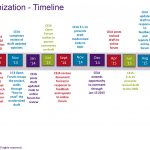
The patient, a 76-year-old woman, had very active polyarticular rheumatoid arthritis (RA), despite triple therapy with conventional synthetic disease-modifying anti-rheumatic drugs (DMARDs), low-dose corticosteroids and occasional intra-articular injections—the latter providing only transient symptomatic relief. She had elevated inflammatory markers and a 28-joint Disease Activity Score (DAS-28) score of 7.4.
Because of the severity of her disease, the next appropriate step in management was the addition of a biologic agent. After discussing the options with the patient and her daughter, etanercept, a tumor necrosis factor α (TNFα) blocker, was recommended. The patient and her daughter agreed, and preliminary tests were ordered to determine if it could be used safely.
When the patient and her daughter returned to review the laboratory studies and discuss use of the agent, the patient’s daughter explained that the patient had an insurance plan with a substantial copay for biologic agents. The daughter requested that, instead, the prescription be written in her name; the daughter was well connected to the hospital and had a more robust prescription-reimbursement plan.
The patient’s daughter was told this would not be possible, that there was no documentation that the daughter had rheumatoid arthritis—she had no preliminary laboratory studies—and that this would be fraudulent. Further, if by some chance the daughter were to take the medication on her own, adverse reactions might be possible from a medication neither indicated nor monitored.
The patient and her daughter were adamant that they wanted in-home subcutaneous options rather than infusions at an infusion center, which would have been covered under the patient’s insurance. They were told the office could attempt to find out if the patient qualified for a manufacturer’s discount or financial support, but neither the patient nor her daughter found that acceptable and left without scheduling a follow-up appointment.
Discussion
As a practical matter, a biologic agent cannot be prescribed appropriately without an established indication and evidence of failure to respond to lesser treatments, as well as with initial and ongoing monitoring. These factors alone precluded acceding to the patient’s and daughter’s request. The explanation offered to them was non-accusatory; however, even if such a prescription were possible, the ethical implications would be substantial.
Simply stated, medicine is a moral undertaking. As autonomous moral agents, patients have a right to competently accept or refuse diagnostic or therapeutic recommendations. That stated, the moral agency of physicians also must be respected. This means patients and their decision makers should not ask physicians to violate their conscience or the integrity of the profession. Engaging in a request to defraud a prescription reimbursement plan, even for the benefit of an underinsured patient, is beyond what should be asked or demanded.

